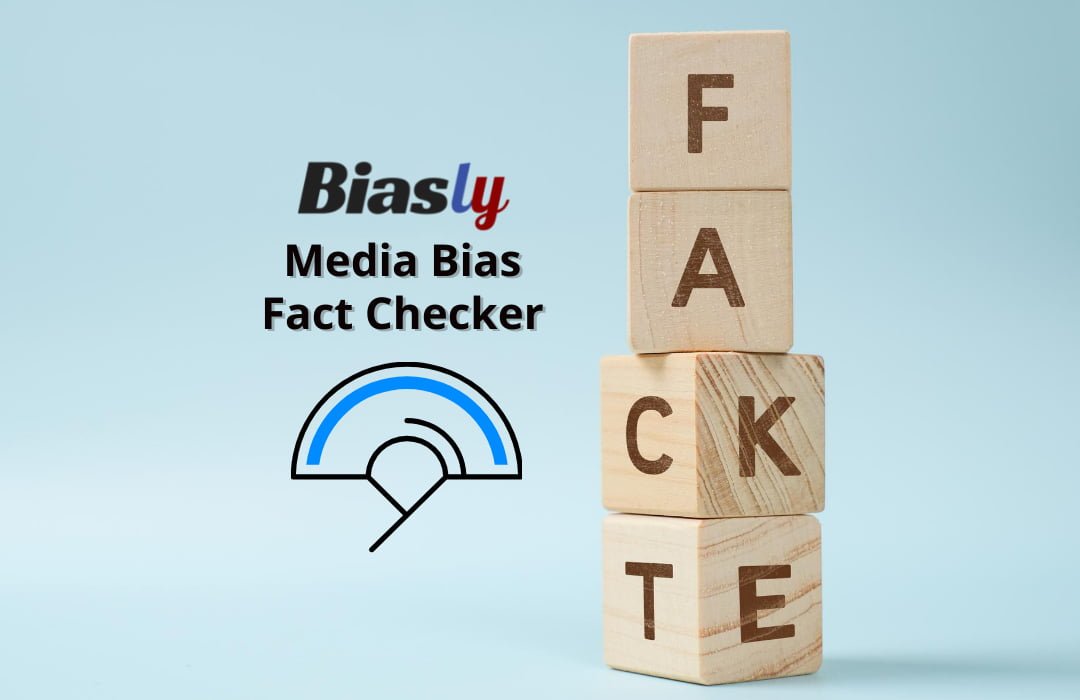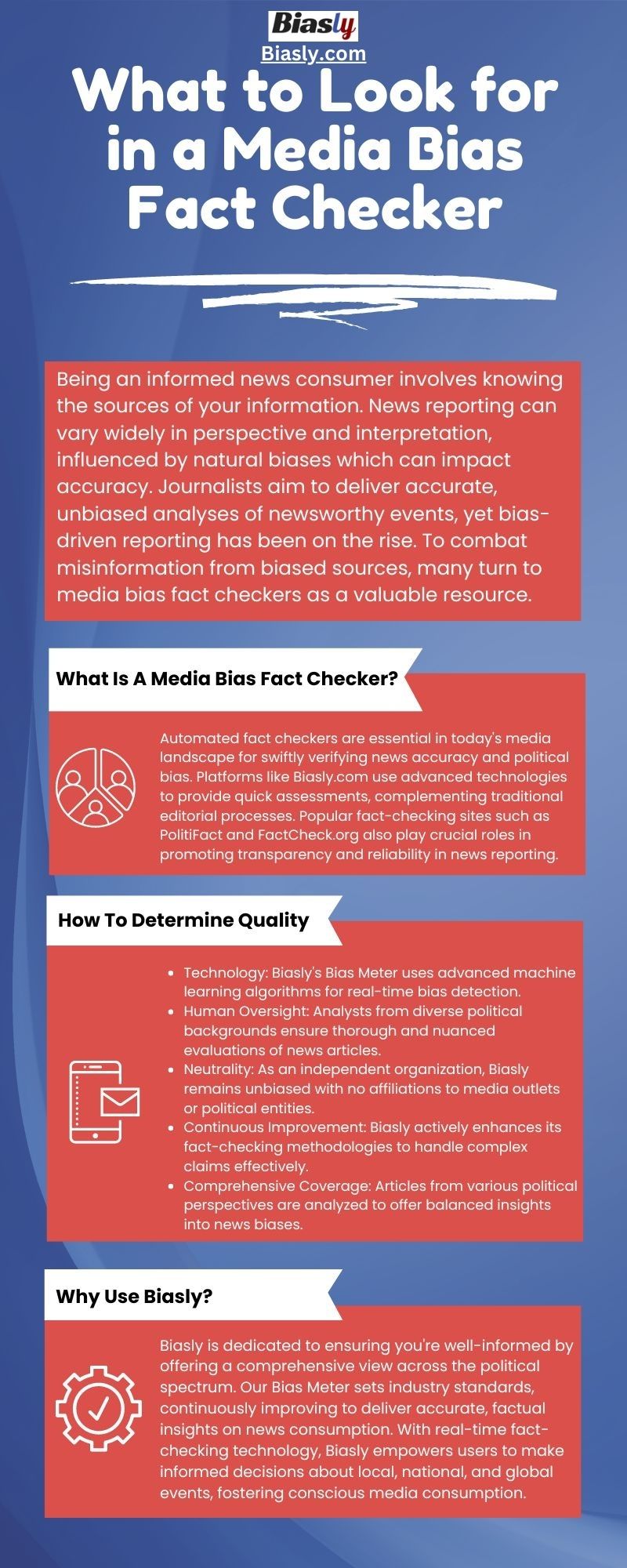
An important part of being an educated consumer of news is making sure that you know where your news is coming from. There are many different ways of reporting news and thoughts about what a newsworthy event may mean for local, national, and international communities. These different perspectives manifest themselves as natural biases, which can also be detrimental. When reporting news, a journalist should strive to provide “accurate, unbiased analy[es]” and statements on newsworthy events. However, we have been seeing an uptick in bias-driven reporting in recent years, and in an effort to curb public misinformation, which can come from consuming biased news sources, media bias fact checkers have become a popular resource for many.
What is a Media Bias Fact Checker?
In their article, “A Survey on Automated Fact Checking,” Zhijang Guo, Michael Schlichtkrull, and Andreas Vlachos note that automatic fact and media bias checkers “have become increasingly important due to the speed with which both information and misinformation can spread in the modern media ecosystem.” These programs use natural language processing, machine learning, knowledge representation, and databases to almost instantaneously predict the truthfulness of claims made in news articles and the potential political bias of a news article, which can be seen on Biasly.com’s site. While internal and external fact-checking is done before articles are published, these fact-checkers are a creative twenty-first-century solution to making sure that the public knows that their news is true and where it is coming from. Some popular fact-checking websites include Biasly, PolitiFact, FactCheck.org, and The Washington Post Fact Checker. Bialsy’s easy-to-use bias check extension for Chrome gives the user a bias rating and conducts an analysis of the news and people and/or policies mentioned in an article.
How to determine the quality of a Media Bias Fact Checker
With the incredible rate at which information and misinformation are being spread, it is incredibly important that the public have reliable tools to learn about the biases in the news they’re reading. When choosing a media bias fact checker, there are three important things to consider.
Up-to-date and reliable technology
As mentioned before, media bias fact-checkers need to be able to keep up with the massive amount of news that comes out each day. Thus, using real-time bias meter algorithms should be able to identify certain parts of an article, like tone and author opinion.
Biasly’s Bias Meter uses such an algorithm based on machine learning to predict biases in the news. Also, important is the fact that this technology is based on computers making predictions rather than humans who have inherent biases. These aspects help deliver a true and accurate reading of the news.
Not just reliant upon the machine
While one of the advantages of a fact checker is that it is inherently objective, it does present some limits. Sometimes technology struggles with more complex claims and language, and it is important to make sure that the media bias fact checker that you’re using is being actively supported and improved. Biasly has a team of diverse analysts whose beliefs span across the political spectrum and are meticulously analyzing articles for biases using Biasly’s analyst rating methodology. Each article is rated by a team of three analysts with each person from a different side of the aisle with moderate, left, and right-leaning perspectives. Each of these analysts calculates a bias score ranging between -100 and +100, with negative numbers being liberal and positive numbers being conservative. The analyst ratings, in addition to the A.I.-driven bias ratings, are a reliable comparison for anyone checking biases in the news.
Look into the background
Not all fact-checkers are created equally. It’s important to note that all fact-checkers were put in place by humans who have inherent biases and might not always be fair with their methodologies. Some media bias fact-checkers might be skewed to the left or right, and it’s important to make sure that your source is as neutral as possible to ensure you’re getting the most fair analysis possible.
Biasly is an independent organization with no ties to media organizations, political parties, or politicians and does not tolerate bias in its work. There is no hidden agenda. Biasly’s mission is to create more clarity in the news, and that means making sure that people are aware of the biases in the news media they are consuming. The news stories featured and analyzed by our algorithm and analysts come from a wide variety of media outlets from all sides of the political aisle in order to provide fair representations of what’s happening in the world.
Why Use Biasly?
Biasly prides itself on making sure that you, the reader, are the most well-informed possible. We ensure that Americans are able to get the full picture of stories from across the political landscape so that they can make informed choices. Biasly’s industry-leading Bias Meter is always improving to give users accurate, factual information about the news they are consuming. The real-time fact and bias-checking technology can help provide you with insights about local, national, and world events and political news all the while helping you become a more conscious news media consumer.























